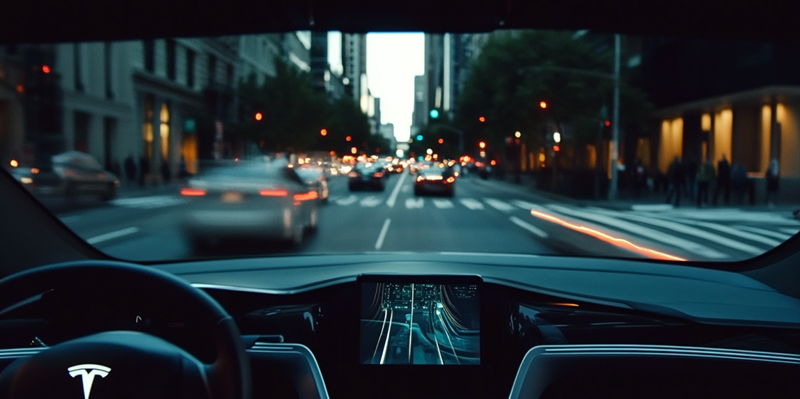Tesla’s plan to launch paid robotaxis by 2025, a vision spearheaded by CEO Elon Musk, is undeniably ambitious and one of the most highly anticipated developments in the autonomous vehicle sector. The proposed "Cybercab" is a two-seater vehicle devoid of traditional driving controls, relying entirely on advanced artificial intelligence and camera systems. Designed to offer a fully autonomous ride experience, Tesla aims to begin paid rides in California and Texas by next year, pending regulatory approvals. The initiative represents Musk’s broader vision of a future where human drivers are unnecessary, replaced by machines programmed to drive more safely and efficiently.
Over the past few months, Tesla has been testing its robotaxi service internally in the Bay Area. Employees have been able to book rides using a prototype app, allowing the company to collect crucial operational data before a public rollout. This internal testing phase is designed to iron out any issues and ensure the technology is sufficiently advanced to handle everyday driving conditions. Musk remains exceptionally optimistic about the capabilities of Tesla’s Full Self-Driving (FSD) software, predicting that it will surpass human driving safety standards by mid-2025. However, this optimistic timeline is contingent on overcoming significant regulatory and safety concerns, which remain formidable obstacles to achieving this vision.
Technological and Safety Advancements
Technologically, Tesla has made notable progress in its FSD software, which Musk asserts will be feature-complete by the end of 2024. This timeline is aggressive yet crucial for hitting the 2025 target for robotaxi deployment. Despite these strides, there are lingering concerns about the reliability and safety of this technology. The National Highway Traffic Safety Administration (NHTSA) is currently investigating several incidents involving Tesla’s FSD-equipped vehicles, pointing to potential flaws or lapses in the software’s safety measures.
These investigations exacerbate public skepticism and could delay regulatory approvals, adding yet another layer of complexity to Musk’s ambitious timeline. The company’s focus on achieving a high level of safety performance is a double-edged sword; while advanced technology promises greater safety, it must prove its reliability in real-world conditions. The ultimate challenge lies in ensuring that the technology can function safely in a myriad of unpredictable driving scenarios. Achieving this level of reliability is not only essential for regulatory approval but also for gaining public trust.
Regulatory Hurdles
Regulatory compliance remains one of the most significant hurdles to Tesla’s robotaxi ambitions. California, a state known for stringent requirements for the deployment of autonomous vehicles, presents particular challenges. Tesla has not applied for new permits in California since 2019, indicating that navigating the complex regulatory landscape remains a daunting task. The state requires extensive data and proof of safety before granting permissions, adding layers of bureaucracy that could delay the rollout.
Conversely, Texas offers a more lenient regulatory environment but still necessitates extensive testing before any commercial launch can occur. Even a state with a more relaxed regulatory framework demands rigorous safety validations, making the path to deployment complex irrespective of the locale. Musk himself acknowledges the unpredictability and difficulty inherent in navigating these regulatory landscapes. Achieving compliance requires not just technological advancement but also extensive legal consultations and adherence to a myriad of safety standards, making this a multifaceted challenge for the company.
Competitive Landscape
Tesla’s ambitious plan to introduce paid robotaxi services by 2025, championed by CEO Elon Musk, is one of the most anticipated advancements in autonomous vehicles. Known as "Cybercab," these two-seater vehicles will have no traditional driving controls, relying entirely on advanced AI and camera systems for a fully autonomous ride. Tesla aims to offer these services in California and Texas by next year, pending regulatory approvals. This initiative aligns with Musk’s broader vision of a future where human drivers are replaced by safer, more efficient machines.
In recent months, Tesla has been internally testing its robotaxi service in the Bay Area. Employees have used a prototype app to book rides, allowing Tesla to gather essential operational data before a public launch. This internal testing phase aims to resolve issues and ensure the technology can handle everyday driving scenarios. Musk is highly optimistic about Tesla’s Full Self-Driving (FSD) software, predicting it will exceed human driving safety standards by mid-2025. However, achieving this vision hinges on overcoming significant regulatory and safety hurdles, which remain considerable obstacles.

